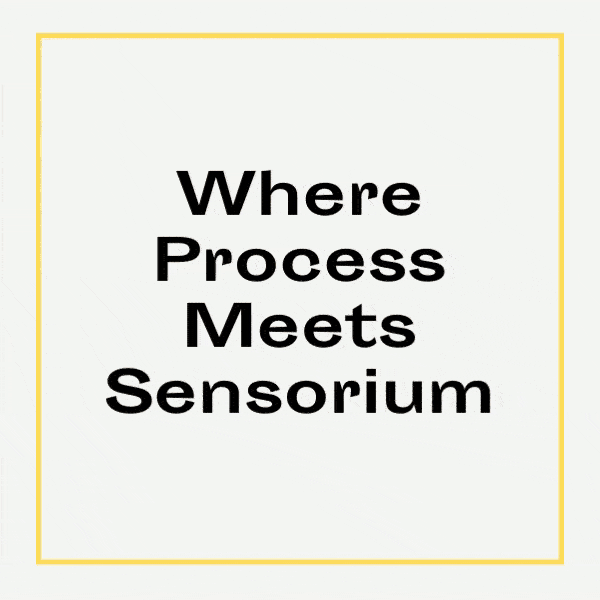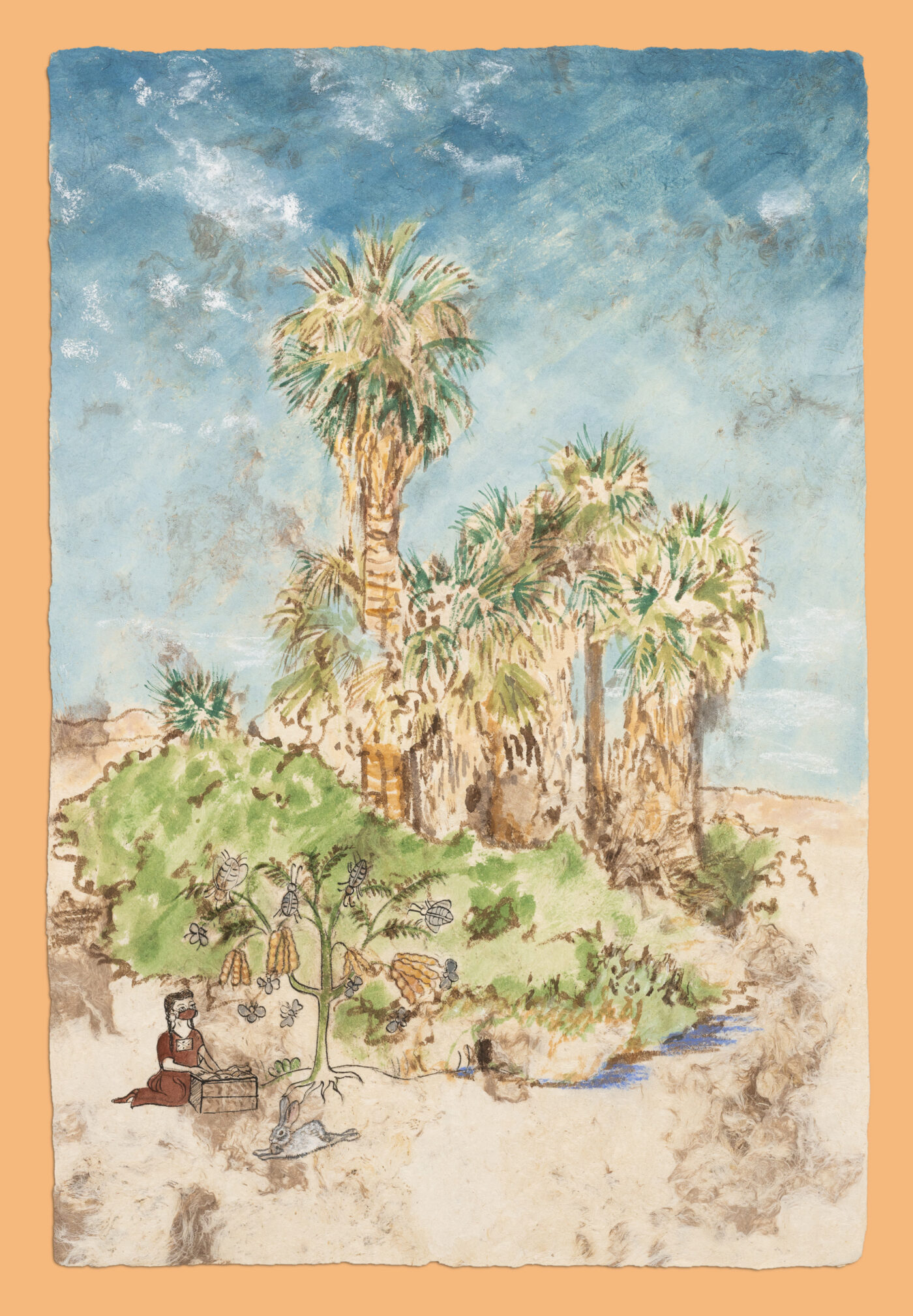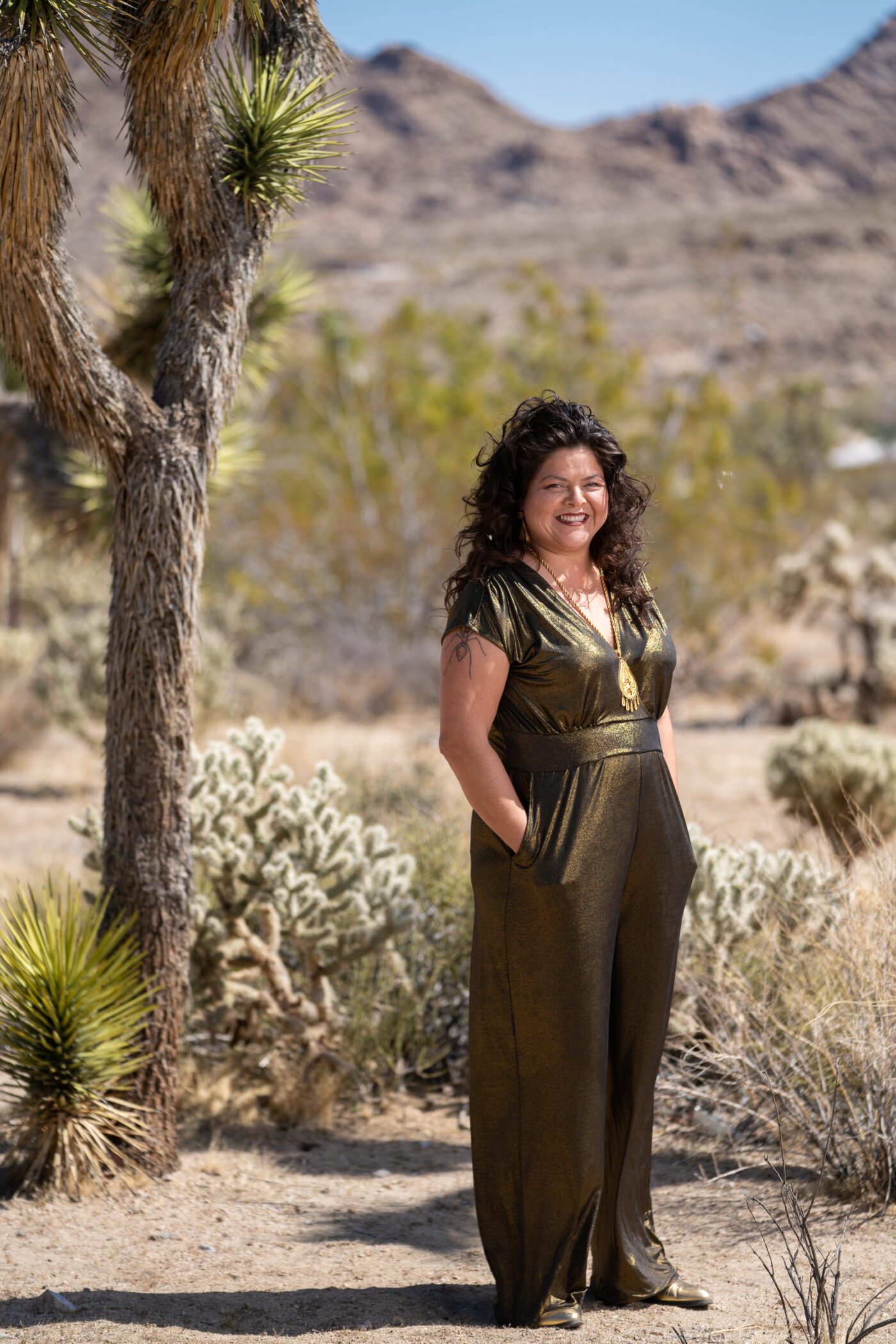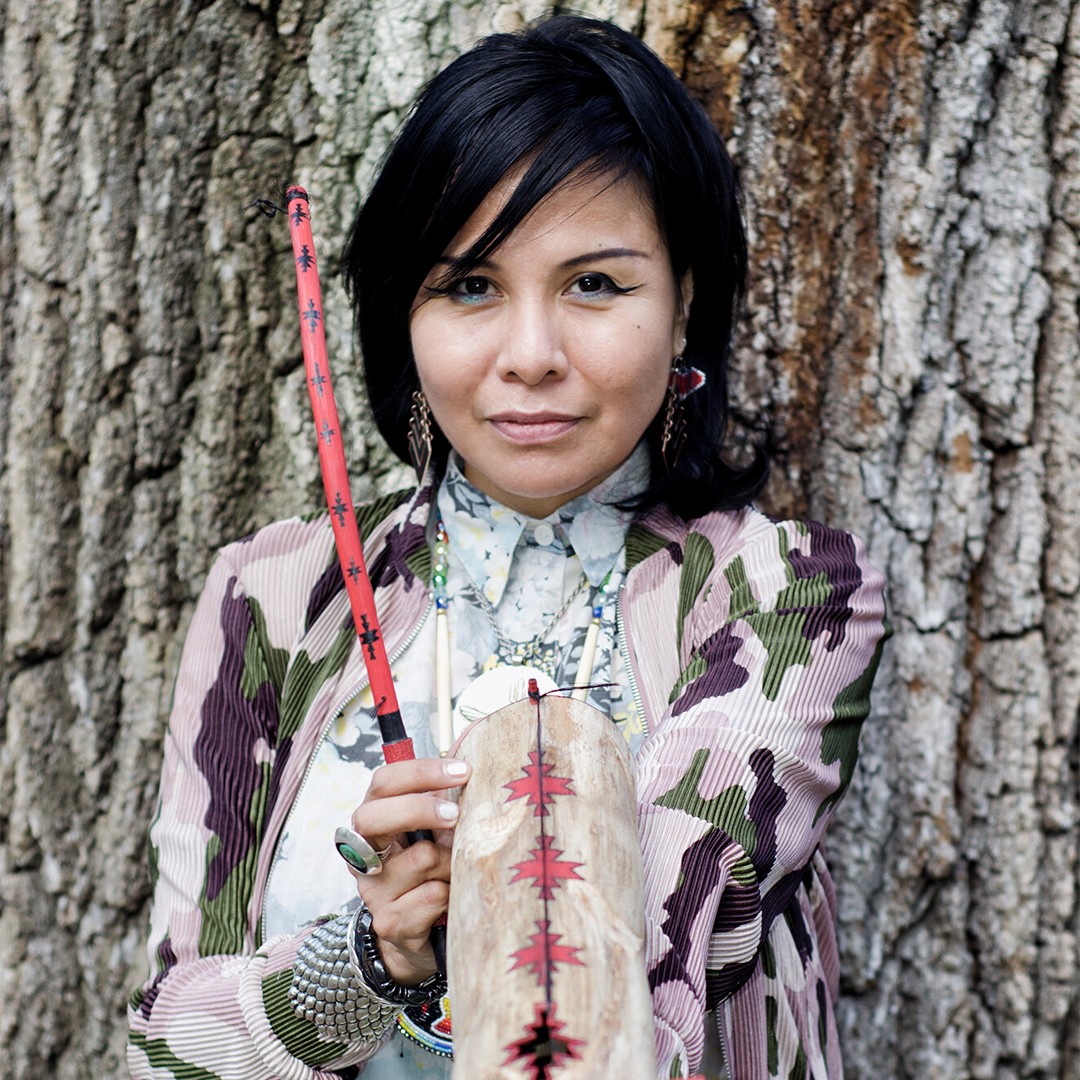

“There is nothing new under the sun, but there are new suns.” –Octavia Butler

7–8 minute experience, or the time it takes for a midday stretch.
Consider the layers of place: surfaces that evoke imaginings of the people who have moved across the land — the rippling of wind, cowlicks of grass fiber, and the vivid colors of sky and trees. Through the textures and tones of material and music, Sandy Rodriguez and Laura Ortman awaken sensory connections to land, ruminating on its histories of movement and displacement of communities. Sandy’s paintings incorporate material inquiry and archival research to bring the present in direct conversation with the past, while Laura builds soundscapes with Apache violin, field recordings, and other elements, which tussle against one another to carve out a sonic environment. Together, the artists’ explorations underscore the importance of process to navigate identity and history.
BY SANDY RODRIGUEZ AND LAURA ORTMAN
Amid the winter surge of Omicron that swept the globe in 2021, I returned to Joshua Tree highlands for a month-long painting residency. I revisited the site of Mara. Local legend tells that a medicine man guided the Serrano people to settle here and instructed them to plant a native desert fan palm (Washingtonia filifera) at the fresh springs for each male born. This site had been home to Serrano, Chemehuevi, and Cahuilla people for thousands of years until Anglo settlers arrived in the 1850s and displaced the population with mining activities and cattle ranches. It is now the present-day location of the visitor center of the national park. The palms at Mara also provided the Serrano with food, clothing, cooking implements, and housing. In addition, the palms are habitat for a wide variety of desert creatures, from colorful orioles to the palm-boring beetle and crazy painters.
In this painting, I am positioned under a honey mesquite tree. The self-portrait is based on an image from a 500-year-old Mexican manuscript about the collecting and preparing of mesquite.

[ID: A tall rectangular painting of a lush green oasis in the middle of the desert. Under a bright blue sky marked with faint wisps of cloud is a grove of shaggy native palm trees, one towering above the others. At the bottom left, Sandy’s self portrait sits gazing up at a honey mesquite tree in the foreground. She is drawn in black lines — her dress and mask filled with the same iron rich red watercolor. The tree’s ripe honey mesquite beans attract hovering insects, painted in the style of colonial period Mexican manuscripts with elements in shifting scale. A lifelike but similarly oversized gray cotton tail stretches out in front of her. The texture of the amate bark paper is present throughout, with its twirling, soft fibers visible and its edges soft and uneven.]
In this painting, I am positioned under a honey mesquite tree. The self-portrait is based on an image from a 500-year-old Mexican manuscript about the collecting and preparing of mesquite. This work is created in walnut ink and local red and yellow ochres. In early 2021, with help from a paleoanthropologist, I collected ochres in Southern California. Iron-rich ochre is one of the most permanent of earth pigments. Indigenous painters of the area traded ochres across the region for use in paintings and rituals. The red of my dress is one of the most intense mineral reds I have ever processed. It begins with crushing the red rock into a fine powder in a mortar and pestle. The next step is levigation. Water is mixed with the powdered pigment. While the impurities settle to the bottom, the finer particles float suspended in the water, creating a red liquid that is transferred to another jar. After twenty-four hours, the finest particles settle and the now clear water can be poured off. The pigment is left to dry into a small cake covered with a cheesecloth to keep insects out. To make watercolor, the crushed pigment is combined with gum arabic that has been dissolved in hot water and left overnight. It is mixed on a granite slab with a glass muller until the right consistency is reached.
LISTEN to Come Say Cibola
[Audio Description: The piece opens with an amplified violin emitting a series of short, rapid notes. As the tone begins to waver between higher and lower registers, a gentle, organ-like chord enters underneath and extends for a minute as the violin hums and scratches from the intensity of vibrato and the bow on its strings.
A shaker layers in a swishing background texture, and a billowing New Mexico wind enters the soundscape soon after, followed by plaintive, lower tones that eventually stabilize into a chord, and the dissonant peals of wind chimes.
The violin slides higher and higher until it becomes a quiet shimmer and disappears. The rippling wind returns, wrestling with the microphone while the wind chimes continue to ring above it.
Quiet notes are rhythmically plucked on the violin’s strings and electric guitar, ascending slowly then dipping to repeat the pattern once more. After a few minutes, an ethereal chord emerges underneath. The billowing wind continues as the other elements fall away.
A woman’s voice enters, sounding far away, and two loud descending notes are plucked. After a rush of wind, the music fades to silence.]

[ID: Sandy, a Chicana with brown hair, smiles at the camera in the Mojave desert dressed in gold jumper, gold shoes and Mexican filigree jewelry.]
Sandy Rodriguez
She // Her // Esa
Los Angeles, CA
Sandy Rodriguez is a first generation Chicana raised on the US-Mexico border who conducts quarterly field study trips across ten Western States to learn about endemic native plants, land, and reconnection. Rodriguez camps, botonizes, hikes, and sketches in deserts, mountains, meadows, and canyons of the West year-round. In the studio, she studies indigenous and colonial maps; devours scholarship about the unceded land and colonial period; vets shifts in indigenous languages; and processes natural specimens into color. She consults with ethnobotanists, anthropologists, art historians, conservators, and artists to discuss questions that arise from her research. Past and present tissue collapse when she translates contemporary stories into visual logographic narratives that interrogate issues of injustice and strategically use potent colorants traditionally used in ritual and medicine as a way of making visible systems of power. The goal is to disrupt western European dominant narratives and challenge audiences with paintings that interrogate legacies of colonial aggression in our daily lives. Over this past year, Rodriguez has been exhibiting the latest works at the Los Angeles County Museum of Art, Denver Art Museum, The Huntington Library, Art Museum and Botanical Garden, The Amon Carter Museum of American Art, El Museo del Barrio, and Another Space, NYC.

[ID: A portrait of a woman standing in front of an enormous tree holding an Apache Violin. She looks directly at the viewer, holding the instrument on her left forearm in front of her torso. She has long dark hair, wing-tipped eyeliner, and colorful patterned garments that both clash with and complement one another.]
Laura Ortman
She // Her // Hers
Brooklyn, NY
A soloist musician, composer and vibrant collaborator, Laura Ortman (White Mountain Apache) creates across multiple platforms, including recorded albums, live performances, and filmic and artistic soundtracks. She has collaborated with artists such as Tony Conrad, Jock Soto, Raven Chacon, Nanobah Becker, Okkyung Lee, Martin Bisi, Jeffrey Gibson, Caroline Monnet, Tanya Lukin Linklater, Martha Colburn, and In Defense of Memory. An inquisitive and exquisite violinist, Ortman is versed in Apache violin, piano, electric guitar, keyboards, and amplified violin, often sings through a megaphone, and is a producer of capacious field recordings.
She has performed at The Whitney Museum of American Art and The Museum of Modern Art in New York, the Musée d’Art Contemporain de Montréal, The Stone residency, The New Museum, imagineNATIVE Film + Media Arts Festival, The Toronto Biennial, and the Centre Pompidou, Paris, among countless established and DIY venues in the US, Canada, and Europe. In 2008, Ortman founded the Coast Orchestra, an all-Native American orchestral ensemble that performed a live soundtrack to Edward Curtis’s film In the Land of the Head Hunters (1914), the first silent feature film to star an all-Native American cast. Ortman is the recipient of the 2022 United States Artists Fellowship, 2022 Foundation for Contemporary Arts Grants to Artists, 2020 Jerome@Camargo Residency in Cassis, France, 2017 Jerome Foundation Composer and Sound Artist Fellowship, 2016 Art Matters Grant, 2016 Native Arts and Culture Foundation Fellowship, 2015 IAIA’s Museum of Contemporary Native Arts Social Engagement Residency, 2014-15 Rauschenberg Residency, and 2010 Artist-in-Residence at Issue Project Room. She was also a participating artist in the 2019 Whitney Biennial. Ortman lives in Brooklyn.
